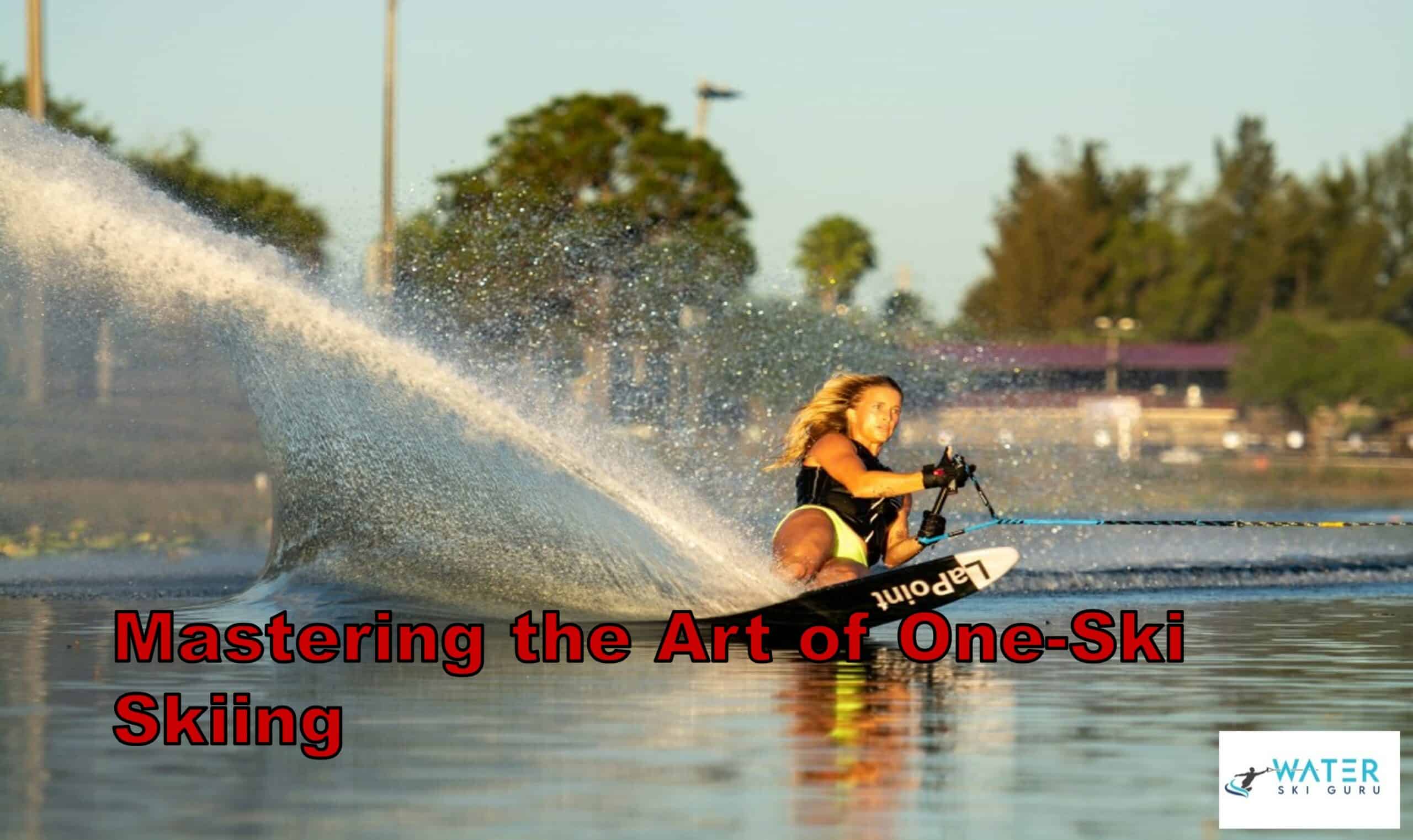As a water sports enthusiast, I have always been fascinated by the art of one-ski skiing. There’s something thrilling about gliding across the water on a single ski, feeling the wind in your hair and the rush of adrenaline in your veins. But make no mistake – mastering this skill is no easy feat. It requires a combination of technique, confidence, and body awareness that can take years to develop.
In this article, I will share my insights on how to master the art of one-ski skiing. From tips for dropping a ski to advice on deepwater starts and one-handed turns, I will cover the essential techniques and strategies you need to know to take your skiing to the next level.
Whether you’re a seasoned skier looking to up your game or a beginner eager to learn a new skill, the tips and advice in this article will help you achieve mastery of the one-ski skiing technique.
So, let’s dive in and explore the world of one-ski skiing together!
Tips for Dropping a Ski
I’ve learned that when dropping a ski while water skiing, it’s crucial to choose the right conditions. It’s best to drive directly into or away from the wind, and avoid driving sideways to the wind. Dropping the speed a little and starting outside the wake can also help me maintain control during the drop.
If the conditions are too rough, I can use the inside of the wake to drop the ski.
Check out this how-to video on slalom skiing.
Body positioning is also essential when dropping a ski. I need to maintain a pull and lean away from the boat, while keeping my weight transitioned through my toes. As the ski falls away, I should point my toe to help the binding come off my foot. Dragging my toe in the water next to the ski can also help me maintain balance.
By mastering these techniques, I can confidently drop a ski and continue to progress in my one-ski skiing skills.
Advice on Deepwater Starts
Starting on one ski can be challenging, but did you know that according to a recent study, being comfortable on two skis before attempting deepwater starts is crucial for success?
It’s important to have a strong foundation before moving on to more advanced techniques. When attempting a deepwater start on one ski, proper body positioning is key. You want to make sure your body is aligned with the boat and your weight is evenly distributed on both feet.
Another important factor in deepwater starts is handle control. You want to keep the handle close to your body and use your outside arm for balance.
As you begin to lift up on the ski, keep your chest up and elbows by your side. Don’t be afraid to take risks and try new things, but make sure you have a solid understanding of the basics before moving on to more advanced techniques.
With practice and dedication, you can master the art of one-ski skiing and become a pro on the water.
Technique for One-Handed Turns
Maintaining proper handle control and using my outside arm for balance, I can execute smooth and controlled one-handed turns while skiing on one ski. Balancing techniques are key to mastering one-handed turns.
By keeping my weight centered and my chest up, I can maintain the proper balance needed for a successful turn. Using my outside arm for balance is also crucial. As I approach the turn, I lean out to the side and use my outside arm to counterbalance the turn. This helps keep me stable and in control.
Additionally, I make sure to keep the handle close to my body and use my core muscles to maintain stability. By focusing on these techniques, I can execute one-handed turns with ease and confidence, making my one-ski skiing experience even more enjoyable.
Frequently Asked Questions
How do you know if you’re ready to try skiing on one ski?
To try skiing on one ski, I need to be comfortable on two skis and have good body awareness. Benefits include improved control and a new challenge. Challenges include mastering the technique and needing proper equipment like a double-wide ski and rubber loop for the dropped foot.
What are some common mistakes made when dropping a ski?
Common mistakes when dropping a ski include improper weight distribution and lack of edge control. Gradual progression and proper alignment are key for success. As a knowledgeable skier, I understand the importance of these technical tips for mastery.
How can you improve your balance and body awareness for one-ski skiing?
To improve balance and body awareness for one-ski skiing, I recommend incorporating balance exercises and core strengthening into your training. The benefits of one ski skiing include improved proprioception and control, which allow for greater maneuverability and speed on the water.
What is the best way to recover if you lose your balance while skiing on one ski?
I tested various recovery techniques while skiing on one ski, including leaning back, turning the ski, and using my dominant foot for balance. I recommend using a double wide ski and rubber loop for the dropped foot, along with an experienced spotter and driver.
Can you ski on one ski if you have a previous knee or ankle injury?
Yes, one can ski on one ski with a previous knee or ankle injury. Rehabilitation options and equipment modifications, such as using a wider ski or a rubber loop on the back foot, can help with stability and reduce strain on the injured area.
Conclusion
So there you have it, my fellow water sports enthusiasts. Mastering the art of one-ski skiing takes practice, patience, and a willingness to take risks. But with the right technique and body awareness, you can glide effortlessly across the water on a single ski.
Before you hit the waves, remember this interesting statistic: according to a recent study, one-ski skiing burns an average of 400-500 calories per hour. That’s right, not only is it a fun and exciting activity, but it’s also a great workout!
So don’t be afraid to drop that second ski and embrace the challenge of one-ski skiing. Who knows, you may even discover a new favorite water sport.
Happy skiing!

